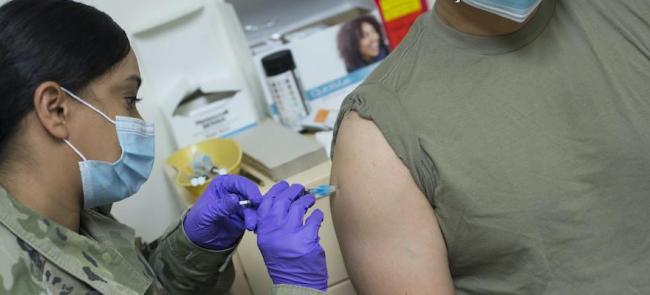
The National Guard will observe its 388th birthday Friday, continuing a tradition that began before the nation’s founding in 1776.
The Guard’s lineage stretches back to Dec. 13, 1636, when North America’s first militia regiments organized in Massachusetts.
The Massachusetts Bay Colony’s General Court — the colony’s legislature — issued an order at the time organizing its militia into three permanent regiments.
These regiments were meant to better defend the colony, and their descendants are now the U.S. military’s oldest units.
These descendants include the 181st Infantry, the 182nd Infantry, the 101st Field Artillery and the 101st Engineer Battalion, all Massachusetts Army Guard units.
The birth of these units now represents the founding of all 54 Guard organizations nationwide.
Today, the Pentagon uses the dates organized units were created by their initial authorizing legislation as the formal birthdates of each armed service’s active and reserve components.
The Army Guard thus celebrates its birthday on Dec. 13, 1636, due to the Militia Act of May 8, 1792.
This measure permitted militia units organized before May 8, 1792, to retain their "customary privileges," subsequently basing the Army Guard’s birthday in law.
The Air Guard marks Sept. 18, 1947, as its official birthday as the Air Force’s reserve component.
The first secretary of the Air Force was sworn into office on that date via the National Security Act of 1947.
This legislation authorized both the Air Force and the Air Guard, and units from the former component began transferring into the latter soon afterwards.
Other states and Puerto Rico claim earlier militia heritages, but, unlike Massachusetts, none of their units has a continuous lineage between their original units and today’s.
Men bearing arms in a Massachusetts field in 1637 has since become an enduring symbol of the Guard’s origins.
The image comes from a 1984 painting titled "The First Muster," which is part of the National Guard Heritage Series.
The painting depicts 17th century men in military attire training with muskets on the drill field in Salem, Massachusetts, about a year after the Massachusetts Bay Colony General Court issued its order creating North America’s first three militia regiments.
The North, South and East regiments were organized from the independent militias in 14 villages around Boston, which existed at the time to maintain the colony’s defense, law and order.
Many states’ joint force headquarters and Guard units deployed overseas now celebrate the Guard’s birthday with annual cake-cutting ceremonies.
NGAUS and the National Guard Bureau — for example — will host a shared reception Wednesday for the Guard’s birthday on Capitol Hill.
Gen. Steven S. Nordhaus, NGB’s 30th chief, is expected to speak at the reception.
Speaking invitations have also been extended to the four current co-chairs of the House and Senate Guard caucuses: Trent Kelly, R-Miss., and Andy Kim, D-N.J., in the House; and Lindsey Graham, R-S.C., and Jeanne Shaheen, D-N.H., in the Senate.
Retired Maj. Gen. Francis M. McGinn, the NGAUS president, also hopes to attend Wednesday’s festivities.
— By Mark Hensch












